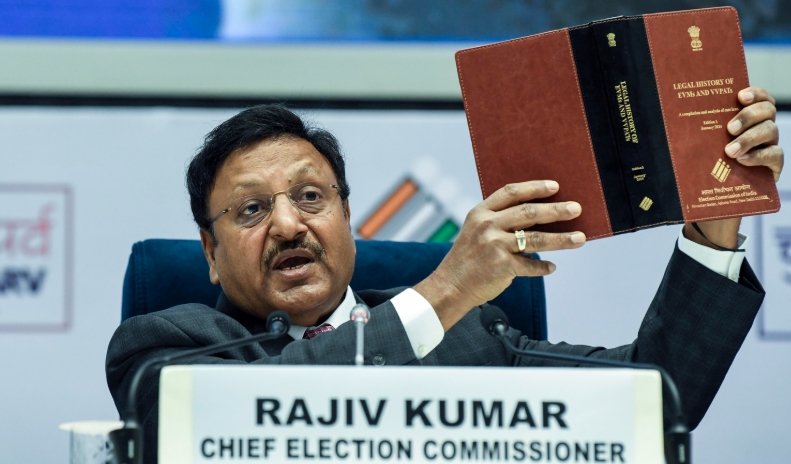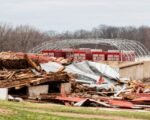Mesa County and the City of Grand Junction are teaming up to handle Tuesday’s general municipal election, aiming for smoother logistics and wider accessibility as voter turnout remains sluggish.
With just a few days left before the April 8 election, officials are hoping more ballots roll in over the weekend. So far, only around 10,500 out of 50,000 ballots have been returned. The city’s partnering with the county to ease the process and, hopefully, get more voices in the mix.
Why This Election Matters More Than It Looks
Municipal elections tend to fly under the radar. No big-name candidates. No national headlines. But Bobbie Gross, Mesa County’s Clerk and Recorder, says these smaller races are where decisions closest to home get made.
“People don’t always realize it,” Gross said, “but your city council? They shape your day-to-day life more than most elected officials ever will.”
This year’s ballot includes a handful of city council races and two ballot questions—both of which could influence local infrastructure and spending.
Still, voter participation’s lagging.

Low Turnout, High Stakes
As of the latest count, fewer than 21% of ballots have been returned. That’s not surprising for a local election, but it’s still concerning.
Gross isn’t panicking just yet. “We’ve got the weekend. Monday. Election Day itself. A lot of people wait until the last minute.”
But the numbers don’t lie:
-
Ballots sent out: ~50,000
-
Ballots returned so far: ~10,500
-
Estimated turnout rate: ~21%
-
Drop box locations: 8 citywide, monitored by Mesa County
That last stat might help boost returns. By managing ballot drop boxes throughout the area—not just inside city limits—the county is helping make voting more convenient for residents who live, work, or travel outside central Grand Junction.
Mesa County Steps In With Experience and Infrastructure
This isn’t the county’s first rodeo. Mesa County already handles larger elections, and now it’s bringing that same muscle to the city’s smaller vote.
“We’ve got the infrastructure,” Gross explained. “We can track ballots, manage drop boxes, and run vote centers efficiently.”
She says partnering up just makes sense. It allows the city to focus on outreach and community-specific messaging, while the county handles logistics.
The vote center itself will be operated by the county. So will the ballot intake process and tabulation system. That gives voters a consistent experience—whether they’re voting in a federal, state, or municipal election.
More Access, Less Confusion
One common issue with local elections? Confusion over where and how to vote. Gross is hoping to eliminate that.
The county’s support means voters can use any ballot drop box in the city—not just the one closest to their neighborhood.
“We wanted to make it easier,” she said. “If someone’s commuting, working late, or just not near their regular drop box, they still have options.”
There’s also the in-person vote center, staffed by county workers familiar with the system. It’s open through Election Day for those who prefer to vote in person or need assistance.
A Look at What’s on the Ballot
While this election doesn’t include national races, the issues at stake are still significant.
The ballot features:
-
City Council races: Multiple seats are up for grabs
-
Ballot Question 1: Related to infrastructure spending for public transportation
-
Ballot Question 2: Focused on adjusting municipal code for land development
These kinds of decisions can ripple out for years. Whether it’s zoning changes or transit upgrades, the impact on residents is immediate.
Local Control, Local Voices
Gross has been doing this long enough to know how often people skip local votes—and regret it later.
“There’s this idea that your vote doesn’t matter. But in a city election? Sometimes we’re talking about 50 or 100 votes making the difference.”
And with turnout so low, that influence grows.
“We always tell people: If you want a say in how your neighborhood grows or what your street looks like, this is how you do it.”
One sentence stood out during our chat:
“Local elections are where your vote is loudest.”
That’s hard to argue with.
Election Timeline and Deadlines
Here’s what voters need to know:
| Date | Event | Notes |
|---|---|---|
| April 5–7 | Ballot return weekend | Drop boxes open across the city |
| April 8 (Tues) | Election Day | Vote center open; all ballots due by 7 PM |
| Post-Election | Ballot counting and verification | Overseen by Mesa County election officials |
If you’ve got a ballot sitting on your kitchen counter, you’ve still got time. But don’t wait too long.
This Partnership Could Be a Blueprint
Mesa County and Grand Junction working together might not sound revolutionary—but in election terms, it’s smart.
Smaller municipalities often lack the staff or systems for large-scale logistics. By tapping the county’s resources, Grand Junction gets better access, security, and consistency.
And while there’s no official talk of expanding the partnership beyond this election, the model could offer a template for other cities nearby. If it works here, who’s to say Fruita or Palisade won’t follow?













